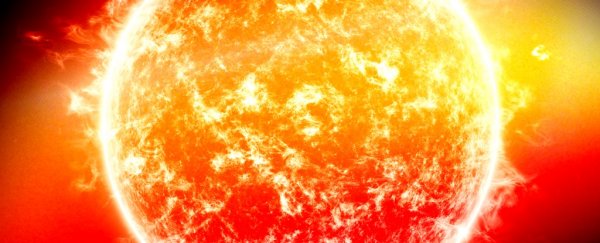Nothing lasts forever. If you look for it, mounting evidence of an impending mass extinction event is all around us, and the forces behind these epic die-offs could be greater than we ever knew.
New research into supernovae millions of years ago suggests dying stars exploding in sufficient proximity to Earth could help bring about changes in our atmosphere – including depleting our planet's protective ozone layer, which over time could drastically alter survival chances for species living on the planet.
"We are interested in how exploding stars affect life on Earth, and it turns out a few million years ago there were changes in the things that were living at the time," astrophysicist Brian Thomas from Washburn University in Kansas told Astrobiology Magazine.
"It might have been connected to this supernova."
The supernovae Thomas investigated occurred about 2.5 and 8 million years ago at an approximate distance of about 50 parsecs (more than 160 light-years) away from our Solar System.
That might not sound too close, but in terms of the cosmic ray fallout from a supernova, it's plenty close enough, Thomas says.
He was part of a team that last year re-examined just how big the 'kill zone' of a supernova's cosmic ray effects might be.
This time around, Thomas ran a series of models on how different kinds of cosmic rays generated by a supernova would interact with the layers of Earth's atmosphere.
Rather than unleashing some kind of fast-acting death wave, Thomas says the high-energy particles from the supernova would hit our atmosphere over a time scale lasting hundreds or even thousands of years.
One of the most significant effects of this phenomenon – which is called radiative transfer – is the ozone in our atmosphere would get depleted, peaking at about 300 years after the particles first struck Earth.
This means, as we know full well given our existing problems with ozone depletion, that increased ultraviolet light reaches Earth's surface, and in Thomas's calculations, this ultraviolet B (UVB) irradiance could have increased by a factor of 1.1 to 2.8.
That's not necessarily the kind of thing that would create a mass extinction, but with enough time – and we're talking about effects lasting hundreds or thousands of years here – the resulting DNA damage caused to various life forms on the planet could hypothetically kill off or damage the survival prospects of various species.
According to Thomas, you can see these kinds of effects in Earth's fossil record from 2.5 million years ago.
"There were changes, especially in Africa, which went from being more forested to more grassland," he told Astrobiology Magazine.
As for whether mass extinctions could arise under these kinds of circumstances, the research isn't definitive – but it does look like Earth would have been affected, even if it took hundreds or thousands of years for the increased radiation to wreak havoc on the life forms below.
"There is a subtler shift," Thomas said. "Instead of a 'wipe-out everything', some [organisms] are better off and some are worse off."
The findings are reported in Astrobiology.
